Tom's Guide Verdict
The Razer Blade 15 Advanced combines a thin, lightweight design with great game performance. Just be prepared to dish out a whole lot of money.
Pros
- +
Sleek, lightweight design
- +
Great gaming performance
- +
Lots of ports
- +
Easy to control with Synapse
Cons
- -
Lackluster touchpad and keyboard
- -
Convoluted screen options
Why you can trust Tom's Guide
CPU: 10th-Gen Intel Core i7-10875H 2.3 GHz
GPU: Nvidia GeForce RTX 3080
Display: 15.6” QHD, 240 Hz
RAM: 32 GB
Storage: 1 TB SSD
Dimensions: 14.0 x 9.3 x 0.7 inches
Weight: 4.4 lbs
EDITOR'S NOTE: The Razer Blade 15 Advanced won a "highly recommended" honor for best gaming laptop at the Tom's Guide Awards 2021 for gaming.
The Razer Blade 15 Advanced is a remarkable device, particularly when you consider the relatively short history of Razer laptops. Razer’s innovative Blade line has been on the market for less than 10 years, and yet it’s arguably beat old workhorses like Dell, HP and Acer at their own games. Like the rest of the Blade line, the Razer Blade 15 Advanced is both functional and stylish, providing a comparable gaming experience to most fancy desktops.
And, like the rest of the Blade line, the Razer Blade 15 Advanced is also hot, loud and expensive. The first two faults aren’t really dealbreakers, as it’s hard to make a gaming laptop that runs cool and quiet. But no matter how you slice it, $2,900 is quite a bit of money for one of the best gaming laptops, particularly one that has a hard time doubling as a productivity device.
In our Razer Blade 15 Advanced review, we’ll discuss the PC’s powerful components, its excellent gaming performance and its innovative screen. It’s not the only gaming laptop in this price range that’s worth considering, but in spite of a few faults, the Blade 15 Advanced works pretty hard to earn its steep asking price.
Razer Blade 15 Advanced review: Price and availability
There are five different configurations of the Razer Blade 15 Advanced, ranging between $2,600 and $3,300. All models come equipped with an Intel Core i7-10875H processor, 1 TB SSD storage and a copy of Windows 10 Home. There’s considerable variation beyond that, both in terms of internal components and displays.
The $2,600 model, for example, comes with a full HD screen, a GeForce RTX 3070 GPU and 16 GB RAM. The $3,300 model, on the other hand, comes with a 4K OLED screen, a GeForce RTX 3080 GPU and 32 GB RAM.
Our test model was the middle-of-the-road $2,900 variation, which comes with a QHD, 240 Hz display, a GeForce RTX 3080 GPU and 32 GB RAM. Even a mid-tier Razer Blade 15 Advanced surpasses high-end models from competing manufacturers, both in terms of components and price.
Get instant access to breaking news, the hottest reviews, great deals and helpful tips.
Razer Blade 15 Advanced review: Design
Razer has a penchant for designing absolutely gorgeous laptops, and the Razer Blade 15 Advanced is no exception.
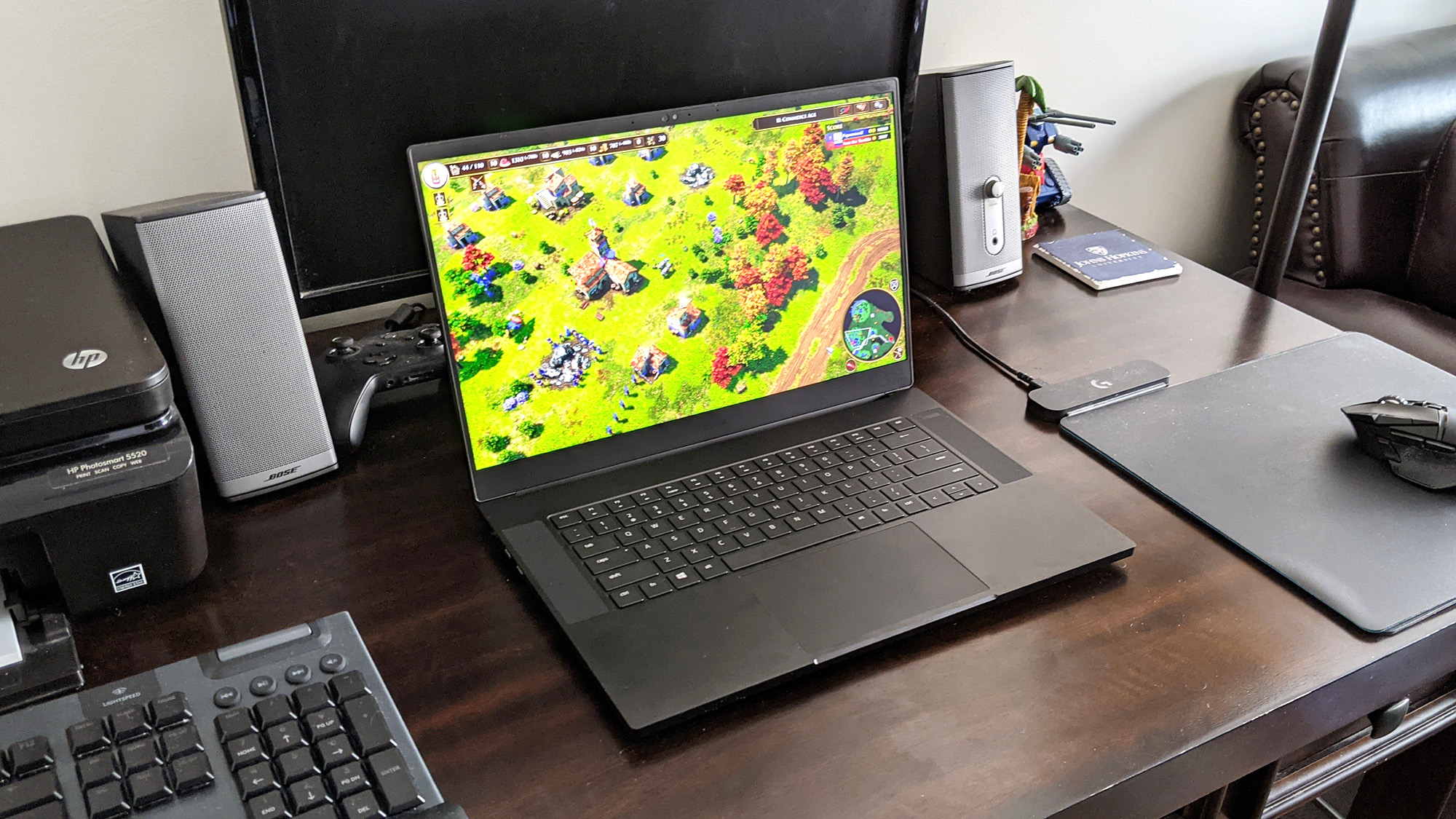
This sturdy machine measures 14.0 x 9.3 x 0.7 inches, and that’s remarkably small when you consider how many powerful components it packs. At 4.4 pounds, it’s not as light as it looks, but it’s not hard to carry for extended periods of time, either.
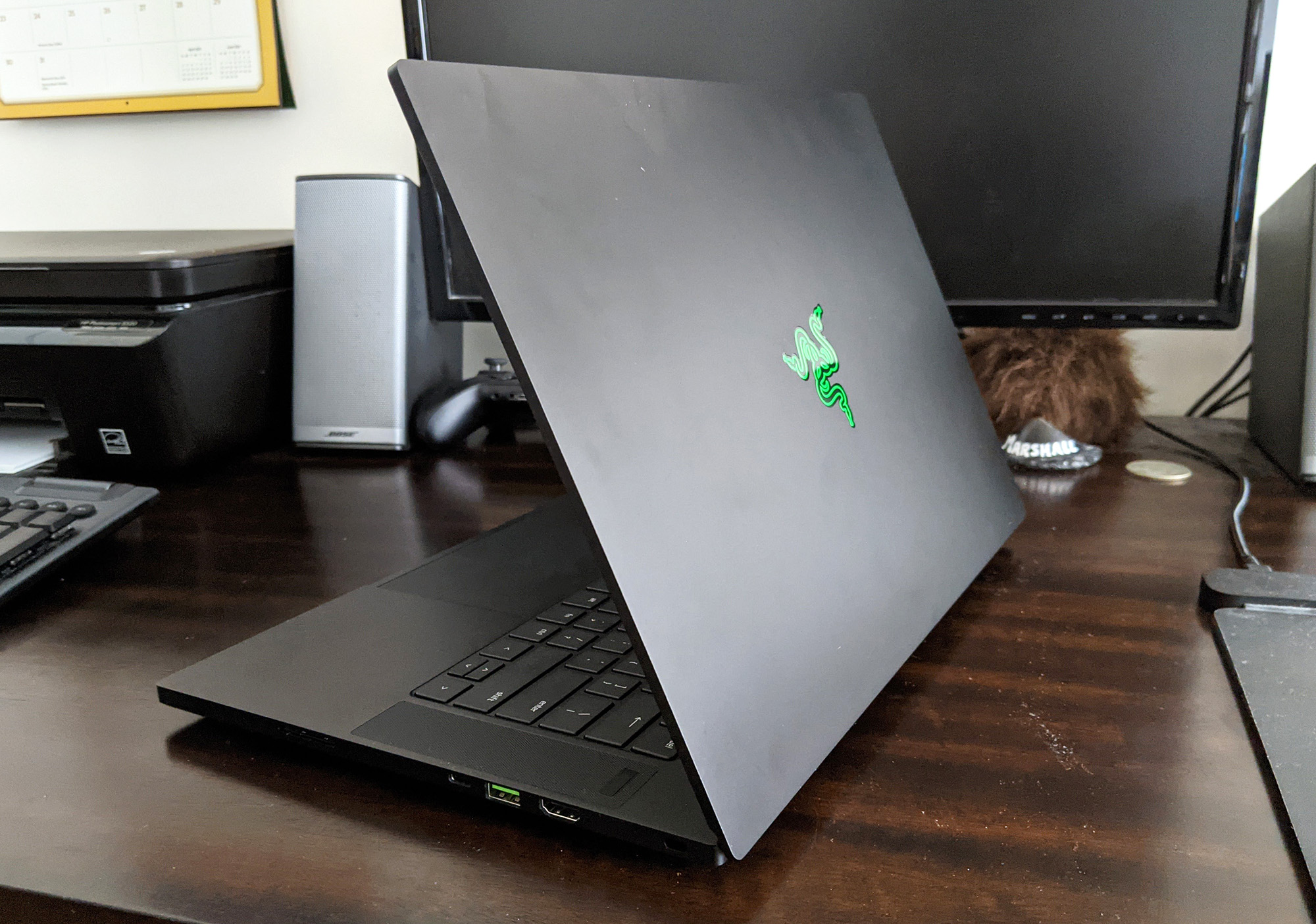
As far as its appearance goes, the best word to describe the Blade 15 is “sleek.” It has a black brushed metal chassis, with a light-up Razer logo in the center of the lid. Open it up, and you’ll find a screen with minimal bezels on top, and a tenkeyless keyboard, two speakers and a large touchpad on the bottom. The metal chassis is, unfortunately, quite prone to fingerprints, and probably adds some weight to the overall design. Still, it’s a lot more elegant (and durable) than a plastic model.

On the bright side, the Blade 15 has ports to spare. On the right, there’s an SD card reader, a USB-C port, a USB-A port and an HDMI port. On the left, there’s a 3.5 mm headphone jack, a USB-C port, two USB-A ports and a proprietary power port. For what it’s worth, the proprietary power port is not nearly as convenient as it could be. The cord itself has an asymmetrical design, which makes it difficult to use if you have something plugged into the closer USB-A port. You have to either run the cord around the whole laptop or play musical ports with the rest of your peripherals, and neither solution is very convenient.

On the other hand, I do have to give the Blade 15 a lot of credit for including more than one USB-C port. More and more gaming peripherals are using USB-C inputs, and it’s high time that gaming laptops and desktops made allowances for that.
Razer Blade 15 Advanced review: Keyboard and touchpad
While it’s a truism that you should always bring your own mouse to a gaming laptop, it’s an absolute necessity for the Razer Blade 15 Advanced. That’s because the touchpad is unresponsive, imprecise and just tetchy in general. Because the touchpad is enormous (5.3 x 3.0 inches), my palms and wrists rested on it constantly, inputting unwanted commands and moving my cursor when I wanted it to stay still. On the other hand, when I actually wanted to use the touchpad, I found it resistant and slow to process commands.
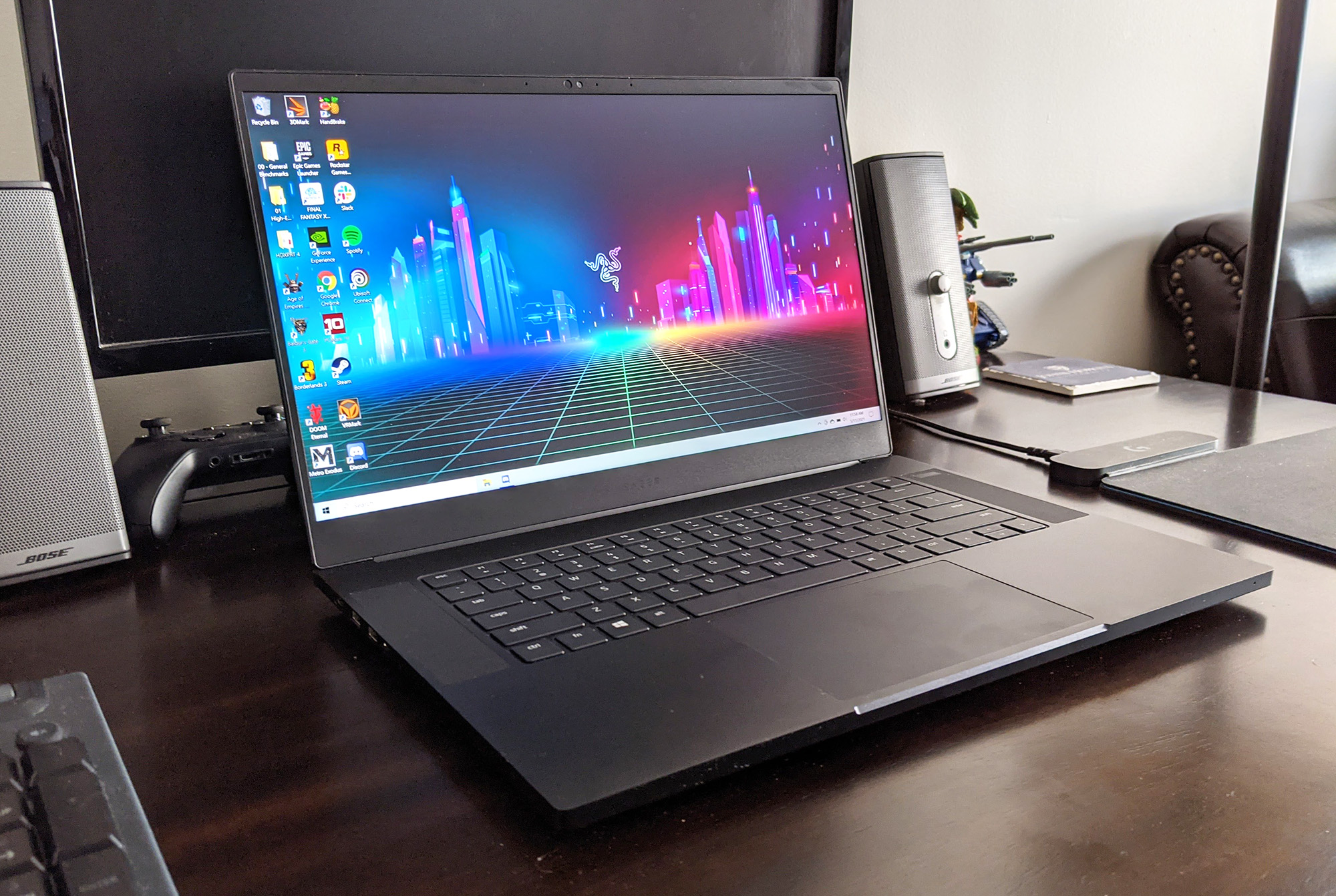
The keyboard didn’t fare much better. With extremely shallow key travel, typing is both an unsatisfying and uncomfortable experience. On a one-minute Typing.com test, I scored 106 words per minute with 98% accuracy, compared to 116 words per minute with 98% accuracy on my regular Logitech G915. Even then, the difference in speed is negligible compared to the difference in tactile sensations. I would expect a lackluster keyboard like the Blade 15’s on a much cheaper, non-gaming model of laptop.
Razer Blade 15 Advanced review: Display and audio
The Razer Blade 15 Advanced has a beautiful screen, which is nonetheless not the most advanced model on the market. While you can get the Blade 15 Advanced with a 1080p, 60 Hz screen, our review model came with a 1440p, 240 Hz screen, and it made a big difference. This colorful screen provides 244 nits of brightness, an sRGB color gamut of 124% and a Delta-E of 0.23. (Delta-E measures color accuracy, and closer to zero is better.) That’s a respectable amount of color, but not as much brightness as its competitors.
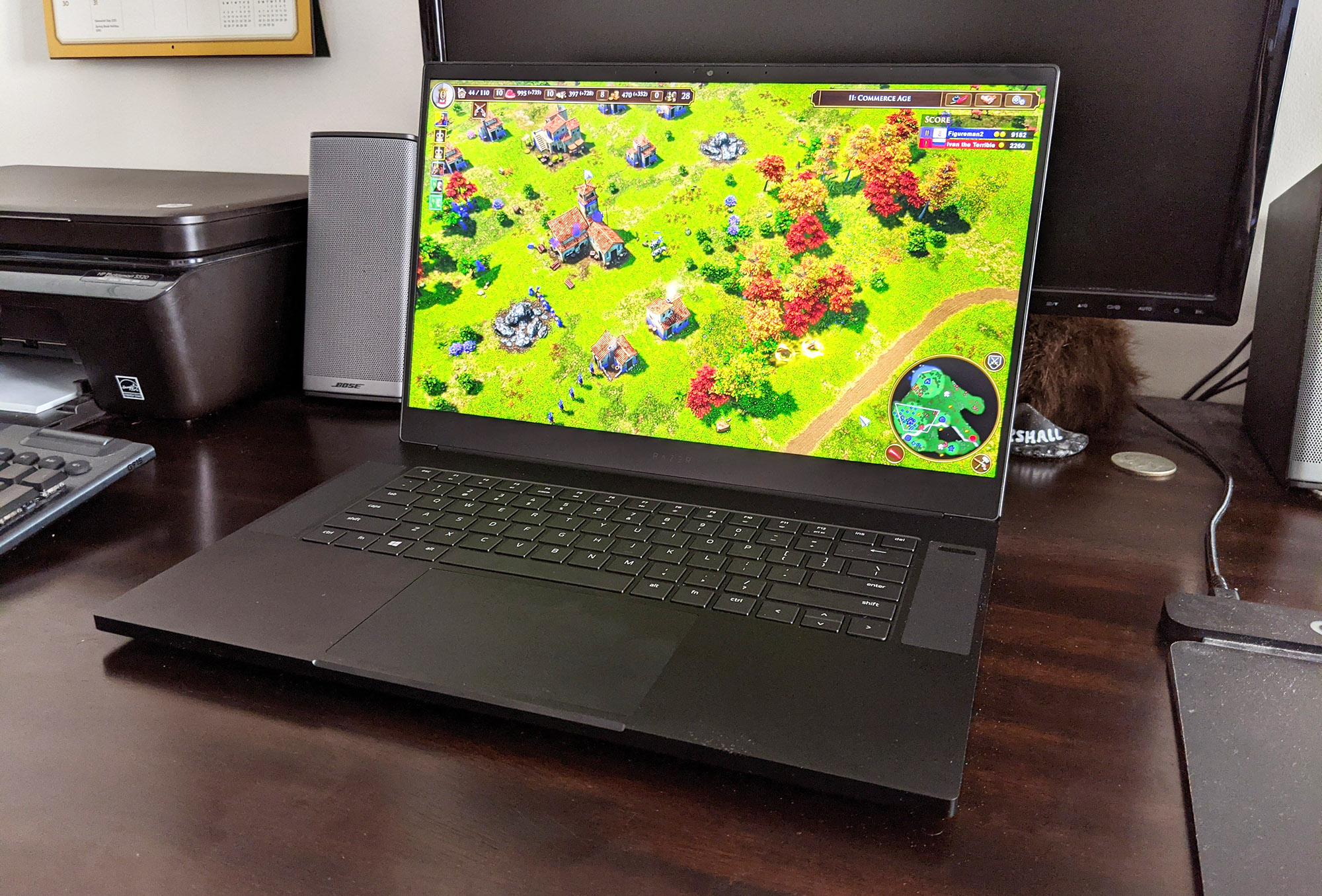
Compare and contrast to the similar Alienware m15 R4, which offers a blinding 460 nits of brightness, as well as a whopping 211% of the sRGB color spectrum, albeit with a Delta-E of only 0.32. Our favorite gaming laptop, the Asus Zephyrus G14, offers 323 nits of brightness, but only 117% of the sRGB spectrum. (We didn’t measure Delta-E on this device.)
Audio is likewise a mixed bag. The speakers can get extremely loud, and since there are two of them, they create a pleasing stereo effect. At the same time, the audio is a bit fuzzy, even on lower volumes, and Razer has THX surround sound enabled by default — even when you’re not using headphones. This creates obnoxious reverb, and sounds especially grating on video calls. Just get a gaming headset.
Razer Blade 15 Advanced review: Performance
When it comes to game performance, the Razer Blade 15 Advanced lives up to its name. When we cranked some popular PC games up to Ultra settings, the Blade 15 still delivered more than 60 fps at 1080p, and somewhere in the neighborhood of 60 fps in QHD. My own tests backed this up, and getting more than 100 fps in QHD was not at all uncommon.

Here’s how the Razer Blade 15 Advanced did in benchmark tests, compared to two close competitors:
| Row 0 - Cell 0 | Razer Blade 15 Advanced | Alienware m15 R4 | Asus Zephyrus G14 |
| Assassin’s Creed Odyssey (1080p) | 74 | 67 | N/A |
| Grand Theft Auto V (1080p) | 107 | 108 | 115 |
| Red Dead Redemption 2 (1080p) | 70 | 68 | 35 |
| Shadow of the Tomb Raider (1080p) | 88 | 77 | 49 |
(Note that this chart compares only 1080p frame rates, as we don’t benchmark QHD frame rates on laptops that offer 4K screens.)
Generally speaking, the Blade 15 outperformed the competition in Assassin’s Creed Odyssey, Red Dead Redemption 2 and Shadow of the Tomb Raider, sometimes by more than 10 frames per second. Grand Theft Auto V tended to run better on comparable systems, although not by a night-and-day order of magnitude.
I had some pretty impressive results in my own qualitative testing as well. I put the Blade 15 through its paces with Age of Empires III: Definitive Edition, Doom Eternal, Baldur’s Gate III and Final Fantasy XIV. Once I got the screen to properly parse frame rates — and this was something of a struggle, as I’ll describe shortly — the games ran smoothly and fluidly, with lots of color and graphical detail to spare. Age of Empires III and Baldur’s Gate exceeded 90 fps, while Final Fantasy XIV reached 120 fps, and Doom Eternal, 160 fps. You may not need the full 240 Hz refresh rate, but you could probably reach it, at least if you’re willing to turn the resolution down a bit.
My only complaint here is that the Blade 15’s screen doesn’t default to 240 Hz, and getting it out of 60 Hz mode can be a real struggle. While there’s a dropdown menu in the Razer Synapse software (which also controls keyboard lighting, fan speed and power options), it’s grayed out, and suggests that you use Windows Display Options instead. However, Windows also locked me into a 60 fps frame rate — and thought that the Blade 15’s main screen was a secondary monitor. (What the primary monitor was, I can only imagine.)
Eventually, by watching a complicated tutorial video from Razer, I figured out that I had to use the Nvidia software to manually route my video feed through the GPU, then further use that software to manipulate the frame rate. It’s not clear why some of these methods work and others don’t. Thankfully, you have to go through this process only once, but “try three methods, which may not work” is a pretty frustrating viewpoint for a premium product to take.
In terms of productivity, the Blade 15 is powerful enough to handle whatever you throw at it — word processing, e-mail, multimedia, or even graphic design and video work, thanks to its powerful GPU. It earned a 6,662 on the Geekbench 5.4 benchmarking software (higher numbers are better), and copied 25 GB of data to a flash drive at a transfer rate of 890 MBps. We haven’t yet tested a comparable system with Geekbench 5.4, but the file transfer speed was a little slower than the m15 R4, which moved data at 1,147 MBps.
Razer Blade 15 Advanced review: Heat
Like a lot of gaming laptops, the Razer Blade 15 Advanced runs hot and loud. If you’re gaming, it’s impossible to keep the Blade 15 in your lap, as it runs at a searing 113 degrees Fahrenheit. We benchmarked a more comfortable 90 degrees while not gaming, but even so, I found it too hot to keep in my lap for more than a few minutes at a time. This is very much a machine that should live on a desk.
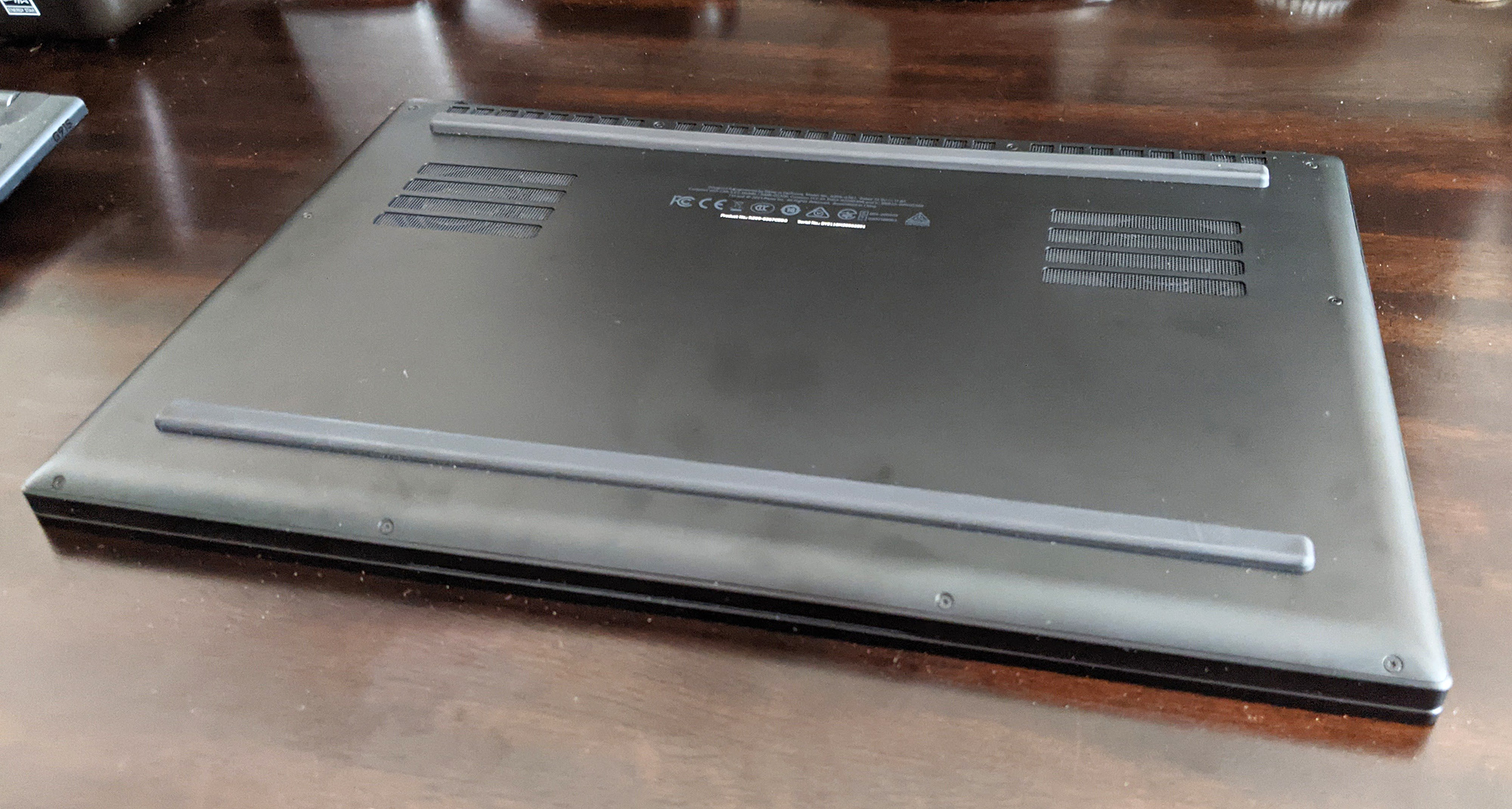
The Blade 15’s fans keep it cool enough to run, although they get pretty loud while doing so. Even when just doing productivity work, the fan ran loudly enough to drown out music on the speakers by default. I tinkered around in the Synapse software and found a more comfortable balance. While the Razer Blade 15 Advanced is not going to whip your stray papers into a whirlwind, it’s not the quietest machine out there, either.
Razer Blade 15 Advanced review: Battery life
Using the Tom’s Guide laptop battery life test (constantly surfing the web on Microsoft Edge), the Razer Blade 15 earned a respectable five hours and 14 minutes of battery life. Compare and contrast to the m15 R4, which runs for about four hours —but also to the Zephyrus G14, which runs for about 11 hours.
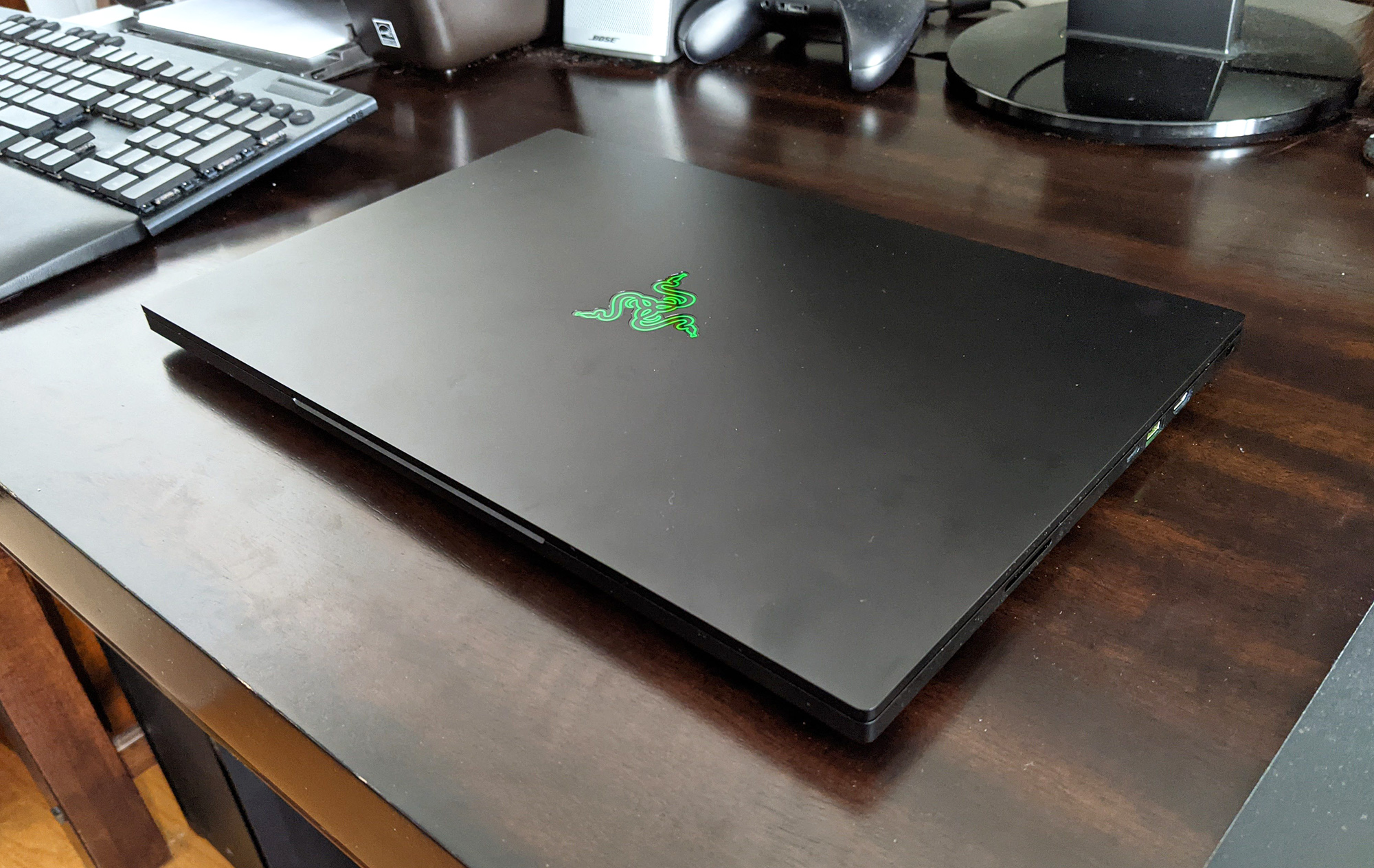
Gaming was a bleaker situation, at one hour and two minutes, but very few gaming laptops can last for longer than that.
Razer Blade 15 Advanced review: Verdict
The Razer Blade 15 Advanced does exactly what you’d expect a Razer laptop to do. It looks great, offers plenty of ports and runs games beautifully. It’s also as expensive as you’d expect a Razer laptop to be; you could easily spend $3,000 on a higher-end model.

While I wasn’t thrilled with the Blade 15’s uncomfortable keyboard, unresponsive touchpad or unintuitive screen refresh rate, these don’t do much to detract from an otherwise excellent product, particularly if you’re willing to bring some of your own peripherals to the party. It's why we also list it as one of the best laptops for engineering students.
In terms of competitors, the Alienware m15 R4 costs roughly the same amount of money, and offers similar functionality. I don’t have a strong preference between the two, although the Razer Blade 15 Advanced is a little bit lighter, a little bit smaller and a lot more aesthetically pleasing.
- Razer Huntsman Tournament Edition Review: Lightweight and Lightspeed

Marshall Honorof was a senior editor for Tom's Guide, overseeing the site's coverage of gaming hardware and software. He comes from a science writing background, having studied paleomammalogy, biological anthropology, and the history of science and technology. After hours, you can find him practicing taekwondo or doing deep dives on classic sci-fi.


